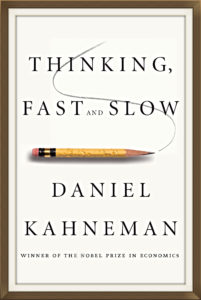 Earlier this year I wrote about two ways of looking at the probability of there being advanced alien civilizations – the Drake Equation and the Fermi Paradox, and how to resolve any apparent conflict between the two. The Drake Equation is simply a series of probabilities of all the factors necessary to have technological civilizations.
Earlier this year I wrote about two ways of looking at the probability of there being advanced alien civilizations – the Drake Equation and the Fermi Paradox, and how to resolve any apparent conflict between the two. The Drake Equation is simply a series of probabilities of all the factors necessary to have technological civilizations.
The Drake Equation is:

where:
- N = the number of civilizations in our galaxy with which communication might be possible
and
- R∗ = the average rate of star formation in our galaxy
- fp = the fraction of those stars that have planets
- ne = the average number of planets that can potentially support life per star that has planets
- fl = the fraction of planets that could support life that actually develop life at some point
- fi = the fraction of planets with life that actually go on to develop intelligent life (civilizations)
- fc = the fraction of civilizations that develop a technology that releases detectable signs of their existence into space
- L = the length of time for which such civilizations release detectable signals into space
Of course we do not know any of the variables. All we can do is input a range of possible answers and see what range of results it spits out. That is exactly what a new study from Oxford researchers did.
This “study” does not include any new information, it is simply a new analysis of the Drake Equation, inputting what they authors think are the most reasonable figures, including the full range of our uncertainty. They argue that the uncertainty is even greater than has been previously considered the case, and when the full range of uncertainty is taken into account, the answers to how many civilizations there are out there varies by orders of magnitude.
Most importantly, the range of possible answers to the Drake Equation equals 1 – meaning that humanity is the only technological civilization in the known universe. They write:
When the model is recast to represent realistic distributions of uncertainty, we find a substantial ex ante probability of there being no other intelligent life in our observable universe, and thus that there should be little surprise when we fail to detect any signs of it.
They argue that their results resolve the Fermi Paradox, which is simply a question asked by physicist Enrico Fermi – If there are any alien civilizations out there, where are they?
Fermi was musing that, given millions of years of spacefaring technology, a civilization in our galaxy could have explored and even settled the entire galaxy. The universe is 13.7 billion years old, and our galaxy, the Milky Way, is almost as old (13.5 billion years) There are an estimated 2 trillion galaxies in the observable universe. That is a lot of time for any civilization to explore and spread out. So why aren’t we seeing them.
One might extend this argument to SETI – the search for extraterrestrial intelligence using radio astronomy. While SETI has explored only a small percentage of the sky, and in a small percentage of possible frequencies, the more we search the more we can say that the galaxy is not humming with alien signals.
The Fermi Paradox can be resolved in a number of ways. It’s possible that the resources necessary for interstellar travel are simply not worth it. It is also possible that our alien neighbors may respect our autonomy and are keeping their distance. But it may also be true that our nearest alien neighbor is a galaxy or more away, really making it not worth the resources to travel to our humble system. All this would take is for any one of the factors in the Drake Equation to be at the low end of estimates.
The one factor we are learning more about is the number of possible worlds in the galaxy that could potentially host life. The search for exoplanets, while still in its infancy, is rapidly finding thousands of worlds around other stars, and we are starting to be able to make statistical statements about typical stellar systems. The numbers are still biased by our search methods, but we are working toward a more accurate representative picture.
First, it turns out that planets are common around other stars. Further, Earth-like planets are also common. Further still, as pointed out by another recent study, this one from Australia, moons may be an even more abundant potential location for life than planets. Large moons around gas giants may have liquid water. We have two such candidates in our own system, Europa and Enceladus. But the researchers are talking more about moons in the goldilocks zone, where liquid water can exist on the surface.
So the answer to the Fermi paradox is not likely to be found in the number of potential host worlds. We can turn next to the probability of life of any kind developing, and that is where we get back to Europa and Enceladus. Even Mars may help inform this question. If we find life or the fossils of life on these other worlds in our own system, that would support the conclusion that life itself is abundant in the universe.
Until, however, we detect actual aliens or their signals, the rest of the factors in the equation are likely to remain a mystery. Put simply – we have a sample size of one. We don’t know how likely life is to develop intelligence, and intelligence technology, and how long such civilizations tend to last. We won’t know until we encounter evidence of aliens.
And, if there are few or no other aliens out there, we will never know the full answer. We would only have increasingly negative evidence and the sense that we are alone.
This does not have to be a depressing thought, however, although it would be disappointing. In response to this study, Elon Musk tweeted:
This is why we must preserve the light of consciousness by becoming a spacefaring civilization & extending life to other planets.
Sure, this is a bit self-serving as his company is trying to get to Mars and this is one of his main justifications for the effort. But it is true, none-the-less. If we are the only technological intelligent species in the galaxy or even the universe, how much the more precious are we. Carl Sagan pointed that out decades ago.
If we are the beneficiaries of a fantastically unlikely series of events, so unlikely that there is only one example in 2 trillion galaxies over billions of years, then we should take all the more care to value and preserve that civilization.
 I encounter a range of opinions regarding the current state of politics and misinformation. At one extreme are those who argue for what I think is a false equivalence – politicians have always lied, the news has always been fake, there is nothing to see here. At the other end are those who argue that social media has changed everything.
I encounter a range of opinions regarding the current state of politics and misinformation. At one extreme are those who argue for what I think is a false equivalence – politicians have always lied, the news has always been fake, there is nothing to see here. At the other end are those who argue that social media has changed everything.
 Have you ever seen someone with “shifty” eyes? How much can we really tell about someone from just their eye movements? This is an interesting question that researchers are exploring.
Have you ever seen someone with “shifty” eyes? How much can we really tell about someone from just their eye movements? This is an interesting question that researchers are exploring.  A recent EU court ruling
A recent EU court ruling It looks like Mars has become the third body in the solar system that has a body of water beneath a cover of ice. As reported by AAAS:
It looks like Mars has become the third body in the solar system that has a body of water beneath a cover of ice. As reported by AAAS: Starting around 1550 primitive railroads were developed as a way to move coal, first within increasingly deep mines, and then from the increasingly distant coal mines to the towns and cities where the coal was needed. At first they were simply wooden rails to help support the wheels of carriages on soft dirt roads. Ties were added for further support. Rails were changed to iron and then steel to add durability. Eventually steam-powered engines were used to move the rail cars.
Starting around 1550 primitive railroads were developed as a way to move coal, first within increasingly deep mines, and then from the increasingly distant coal mines to the towns and cities where the coal was needed. At first they were simply wooden rails to help support the wheels of carriages on soft dirt roads. Ties were added for further support. Rails were changed to iron and then steel to add durability. Eventually steam-powered engines were used to move the rail cars. Earlier this year
Earlier this year
 This is the second study published in the last year looking at outcomes of cancer patients using alternative medicine,
This is the second study published in the last year looking at outcomes of cancer patients using alternative medicine,  I have discussed a number of cognitive biases over the years, based mostly on research in adults. For example, Kahneman and Tversky first proposed the representativeness heuristic in 1973. But at what age do children start using this heuristic?
I have discussed a number of cognitive biases over the years, based mostly on research in adults. For example, Kahneman and Tversky first proposed the representativeness heuristic in 1973. But at what age do children start using this heuristic? The original Matrix movie was brilliant and innovative. It introduced movie elements that we now take for granted, like shifting perspective and “bullet-time”. The story, too, was creative and certainly captured the imagination. In fact, I would argue, the movie has become iconic, in that it represents a more general phenomenon. There is a serious philosophical question about the probability that we are living in a simulated universe. Often “The Matrix” stands in for the concept of any kind of simulated reality.
The original Matrix movie was brilliant and innovative. It introduced movie elements that we now take for granted, like shifting perspective and “bullet-time”. The story, too, was creative and certainly captured the imagination. In fact, I would argue, the movie has become iconic, in that it represents a more general phenomenon. There is a serious philosophical question about the probability that we are living in a simulated universe. Often “The Matrix” stands in for the concept of any kind of simulated reality. A new study
A new study




